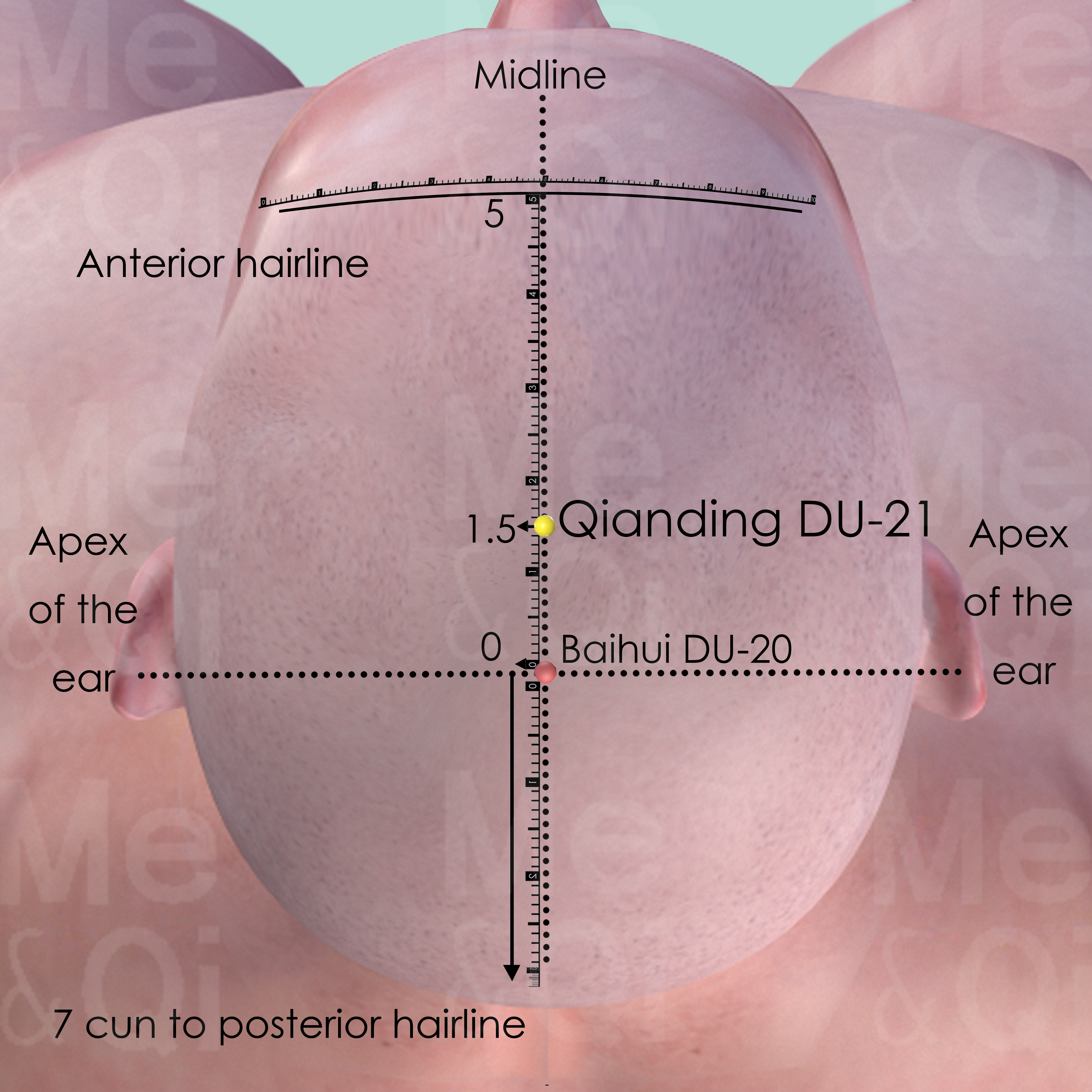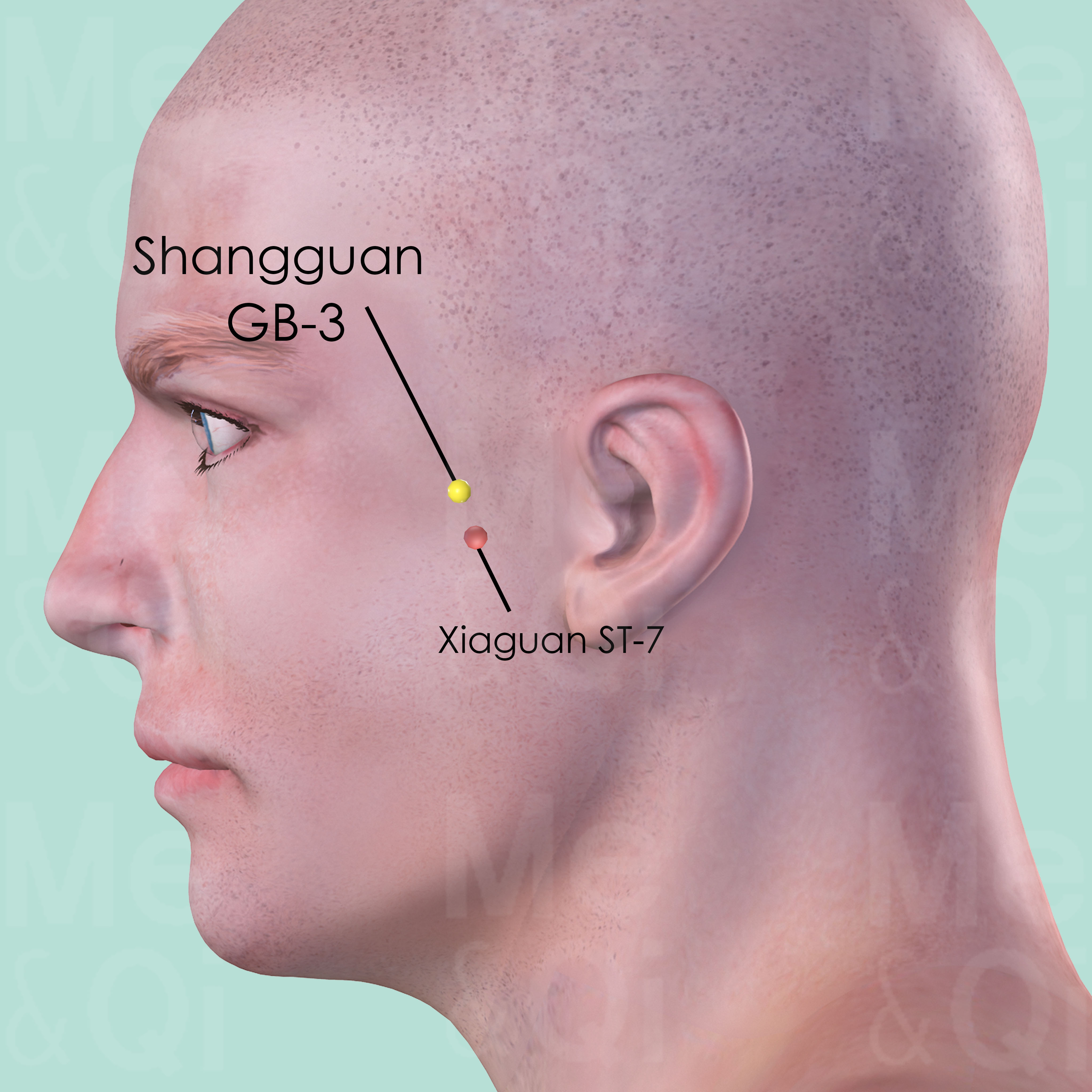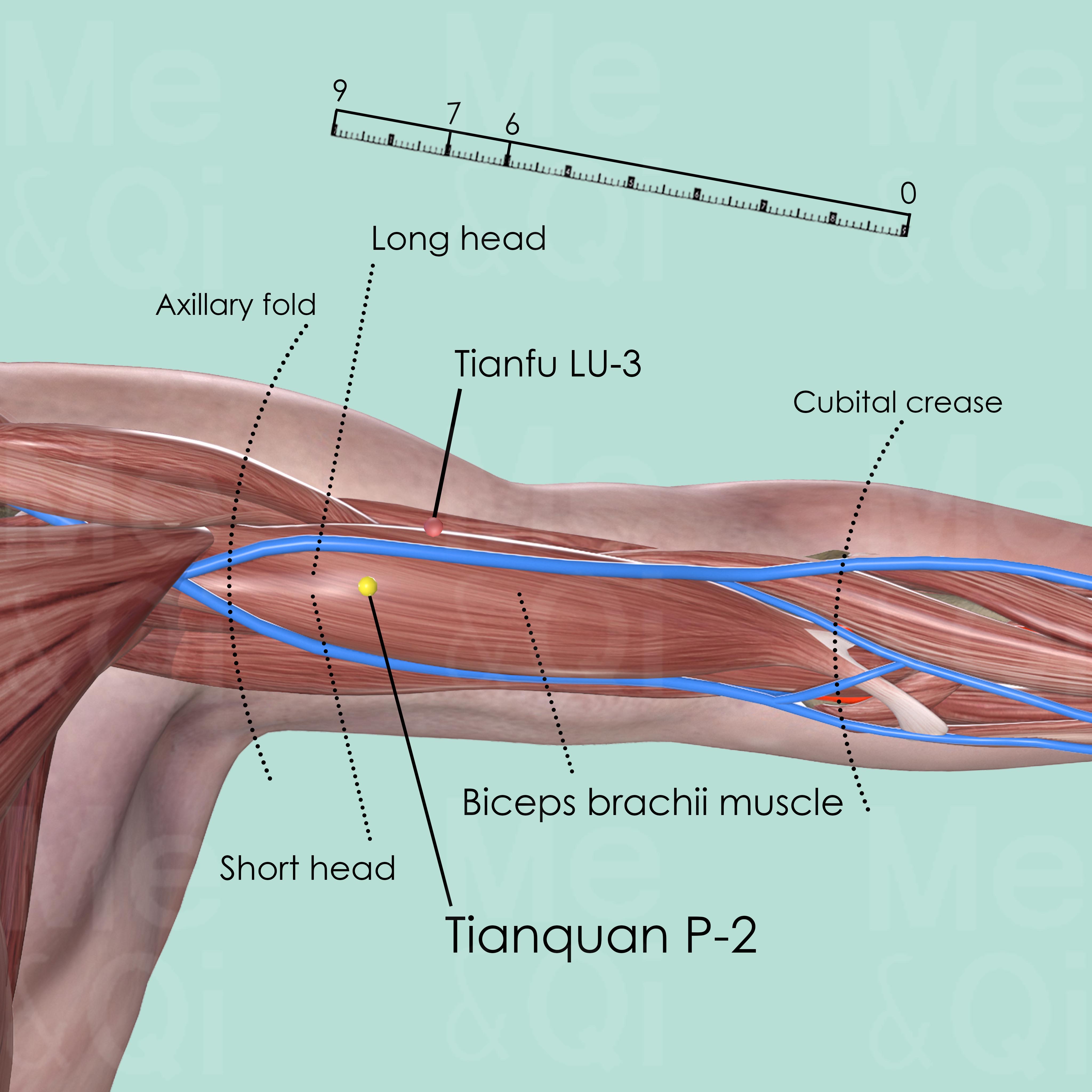Anemophobiaaccording to TCM
Symptom family: Phobias
Root Causes of Anemophobia in TCM
Explore below more details about what might cause Anemophobia according to TCM.
- By Syndrome
- Wind
- Heat
- Cold
- View More Causes
Wind
In TCM "Wind" is a concept that represents a pattern of disharmony, often characterized by its sudden and unpredictable nature, much like a gusty wind changing direction without warning. This pattern is associated with symptoms that come and go quickly or move around the body, such as itching, tremors, or even certain types of pain. Wind is considered to be a primary cause of illnesses that have these rapidly changing characteristics. In TCM, external Wind often refers to illnesses that start suddenly, like the common cold, believed to be caused by external pathogenic factors like climatic changes. On the other hand, internal Wind can be linked to internal imbalances and can manifest in conditions like dizziness or spasms. ... see more
Wind Patterns That Can Lead to Anemophobia
Common Symptoms: Sneezing Aversion To Cold Fever Headaches Nasal Discharge Itchy Throat Coughing Stiff Neck
| Pattern Name | Relevant Symptoms | Relevant Formulas |
|---|---|---|
| Exterior Wind | Aversion to wind, Aversion to cold, Fever, Headaches, Anemophobia, Nasal discharge, Clear sputum, Itchy throat, Sneezing, Coughing, Muscle pain, Itchy skin... see more | Chuan Xiong Cha Tiao San |
| Greater Yang Attack of Wind | Aversion to wind, Slight aversion to cold, Anemophobia, Low grade fever, Mild sweating, Stiff neck, Sneezing, Occipital headache... see more | Gui Zhi Tang |
| Wind-Heat | Fear of wind, Aversion to cold, Fever, Sneezing, Coughing, Nasal discharge, Occipital stiffness, Occipital headache, Perspiration, Sore throat, Yellowish phlegm... see more | Yin Qiao San | Sang Ju Yin | Cong Chi Tang | Huo Ren Cong Shi Tang | Jing Jie Lian Qiao Tang | Zhu Ye Cheng Liu Tang | Xiao Feng San | Fang Feng Tong Sheng San | Bing Peng San | Pu Ji Xiao Du Yin |
Heat
In TCM "Heat" signifies an excess of Yang energy, leading to an imbalance where heat predominates over the body's cool Yin aspects. This condition is metaphorically akin to an internal over-heating. Symptoms indicative of Heat can include feelings of warmth, fever, sweating, irritability, red face, thirst with a preference for cold drinks, and a rapid pulse. The tongue may appear red with a yellow coating. Unlike the common interpretation of heat in terms of temperature, in TCM, it represents a state of hyperactivity or inflammation in the body.... see more
Heat Patterns That Can Lead to Anemophobia
Common Symptoms: Fever Thirst Arthralgia Joints Red And Hot Anxiety Swollen Joints Joint Stiffness Aversion To Cold
| Pattern Name | Relevant Symptoms | Relevant Formulas |
|---|---|---|
| Heat invading the Channels joints and muscles | Aversion to wind, Arthralgia, Joints red and hot, Fever, Thirst, Anxiety, Anemophobia, Swollen joints, Joint stiffness... see more | Xuan Bi Tang |
| Wind-Heat | Fear of wind, Aversion to cold, Fever, Sneezing, Coughing, Nasal discharge, Occipital stiffness, Occipital headache, Perspiration, Sore throat, Yellowish phlegm... see more | Yin Qiao San | Sang Ju Yin | Cong Chi Tang | Huo Ren Cong Shi Tang | Jing Jie Lian Qiao Tang | Zhu Ye Cheng Liu Tang | Xiao Feng San | Fang Feng Tong Sheng San | Bing Peng San | Pu Ji Xiao Du Yin |
Cold
In TCM "Cold" as a pattern of disharmony refers to a specific type of imbalance within the body's systems, often linked to a deficiency or weakness. It's not about feeling physically cold or having a common cold, but rather a metaphorical description of certain symptoms and underlying conditions. When a TCM practitioner says someone suffers from "Cold," it usually implies that the body's Yang energy, which is warm and active, is insufficient or overpowered by Yin energy, which is cool and passive. Symptoms of Cold in TCM can include a general feeling of coldness, cold limbs, pale complexion, low energy, slow metabolism, and a preference for warmth. ... see more
Cold Patterns That Can Lead to Anemophobia
| Pattern Name | Relevant Symptoms | Relevant Formulas |
|---|---|---|
| Wind invading the Channels joints and muscles | Aversion to wind, Arthralgia, Anemophobia, Fever | Da Fang Feng Tang | Xiao Huo Luo Dan |
TCM Herbal Formulas for Anemophobia
Explore below some TCM herbal formulas used to address anemophobia, organized by cause and by formula type.
- By Cause
- By Formula Type
- Wind
- Heat
- Cold
- View More Causes
- Formulas that dredge and disperse external wind
- Formulas that clear wind-Heat
- Formulas that dispel wind-Damp
- External formulas for external disorders
- Formulas that clear early-stage exterior disorders
- Formulas that clear wind-Cold
- Formulas that release the exterior and purge the interior
- Formulas that clear heat and resolve toxicity
Top Formula for Wind:
Gui Zhi Tang
Suitable for Wind patterns that may cause anemophobia, such as Greater Yang Attack of Wind
Learn moreAll Formulas Recommended for Anemophobia Caused by Wind
| Formula | Patterns Suitable For |
|---|---|
| Gui Zhi Tang | Greater Yang Attack of Wind |
| Chuan Xiong Cha Tiao San | Exterior Wind |
| Yin Qiao San | Wind-Heat |
| Sang Ju Yin | Wind-Heat |
| Cong Chi Tang | Wind-Heat |
| Huo Ren Cong Shi Tang | Wind-Heat |
| Jing Jie Lian Qiao Tang | Wind-Heat |
| Zhu Ye Cheng Liu Tang | Wind-Heat |
| Xiao Feng San | Wind-Heat |
| Fang Feng Tong Sheng San | Wind-Heat |
| Bing Peng San | Wind-Heat |
| Pu Ji Xiao Du Yin | Wind-Heat |
Top Formula for Heat:
Xuan Bi Tang
Suitable for Heat patterns that may cause anemophobia, such as Heat invading the Channels joints and muscles
Learn moreAll Formulas Recommended for Anemophobia Caused by Heat
| Formula | Patterns Suitable For |
|---|---|
| Xuan Bi Tang | Heat invading the Channels joints and muscles |
| Yin Qiao San | Wind-Heat |
| Sang Ju Yin | Wind-Heat |
| Cong Chi Tang | Wind-Heat |
| Huo Ren Cong Shi Tang | Wind-Heat |
| Jing Jie Lian Qiao Tang | Wind-Heat |
| Zhu Ye Cheng Liu Tang | Wind-Heat |
| Xiao Feng San | Wind-Heat |
| Fang Feng Tong Sheng San | Wind-Heat |
| Bing Peng San | Wind-Heat |
| Pu Ji Xiao Du Yin | Wind-Heat |
Top Formula for Cold:
Da Fang Feng Tang
Suitable for Cold patterns that may cause anemophobia, such as Wind invading the Channels joints and muscles
Learn moreAll Formulas Recommended for Anemophobia Caused by Cold
| Formula | Patterns Suitable For |
|---|---|
| Da Fang Feng Tang | Wind invading the Channels joints and muscles |
| Xiao Huo Luo Dan | Wind invading the Channels joints and muscles |
Formulas that dredge and disperse External Wind
These formulas are suitable for some anemophobia-causing patterns like Exterior Wind.
One such formula is Chuan Xiong Cha Tiao San, with szechuan lovage root as a key herb.
Other formulas of this category are listed in the table below.
All "formulas that dredge and disperse external wind" recommended for anemophobia
| Formula | Patterns Suitable For (if applicable) |
|---|---|
| Chuan Xiong Cha Tiao San | Exterior Wind |
| Xiao Huo Luo Dan | Wind invading the Channels joints and muscles |
| Xiao Feng San | Wind-Heat |
Formulas that dispel Wind-Damp
These formulas are suitable for some anemophobia-causing patterns like Heat invading the Channels joints and muscles.
One such formula is Xuan Bi Tang, with stephania root as a key herb.
Other formulas of this category are listed in the table below.
All "formulas that dispel wind-Damp" recommended for anemophobia
| Formula | Patterns Suitable For (if applicable) |
|---|---|
| Xuan Bi Tang | Heat invading the Channels joints and muscles |
| Da Fang Feng Tang | Wind invading the Channels joints and muscles |
Formulas that clear Wind-Cold
These formulas are suitable for some anemophobia-causing patterns like Exterior-Empty or Greater Yang Attack of Wind.
One such formula is Gui Zhi Tang, with cinnamon twigs as a key herb.
Formulas that clear Wind-Heat
These formulas are suitable for some anemophobia-causing patterns like Wind-Heat.
One such formula is Sang Ju Yin, with mulberry leaves as a key herb.
Other formulas of this category are listed in the table below.
All "formulas that clear wind-Heat" recommended for anemophobia
| Formula | Patterns Suitable For (if applicable) |
|---|---|
| Sang Ju Yin | Wind-Heat |
| Jing Jie Lian Qiao Tang | Wind-Heat |
| Zhu Ye Cheng Liu Tang | Wind-Heat |
External formulas for External disorders
These formulas are suitable for some anemophobia-causing patterns like Wind-Heat.
One such formula is Yin Qiao San, with honeysuckle flowers as a key herb.
Other formulas of this category are listed in the table below.
All "external formulas for external disorders" recommended for anemophobia
| Formula | Patterns Suitable For (if applicable) |
|---|---|
| Yin Qiao San | Wind-Heat |
| Bing Peng San | Wind-Heat |
Formulas that clear early-stage Exterior disorders
These formulas are suitable for some anemophobia-causing patterns like Wind-Heat.
One such formula is Cong Chi Tang, with scallions as a key herb.
Other formulas of this category are listed in the table below.
All "formulas that clear early-stage exterior disorders" recommended for anemophobia
| Formula | Patterns Suitable For (if applicable) |
|---|---|
| Cong Chi Tang | Wind-Heat |
| Huo Ren Cong Shi Tang | Wind-Heat |
Formulas that release the Exterior and purge the Interior
These formulas are suitable for some anemophobia-causing patterns like Wind-Heat.
One such formula is Fang Feng Tong Sheng San, with saposhnikovia root as a key herb.
Formulas that clear Heat and resolve toxicity
These formulas are suitable for some anemophobia-causing patterns like Wind-Heat.
One such formula is Pu Ji Xiao Du Yin, with baikal skullcap root as a key herb.
Acupoints for Anemophobia
Explore below some acupoints used to address anemophobia, organized by meridian.
- By Meridian
- Governing Vessel
- Gall Bladder Channel
- Pericardium Channel

Qianding DU-21
On the midline, 1.5 cun anterior to Baihui DU-20 or 3.5 cun posterior to the anterior hairline.

Shangguan GB-3
In front of the ear, on the upper border of the zygomatic arch, in the depression directly above Xiaguan ST-7.

Tianquan P-2
2 cun below the end of the anterior axillary fold, between the two heads of biceps brachii muscle.
